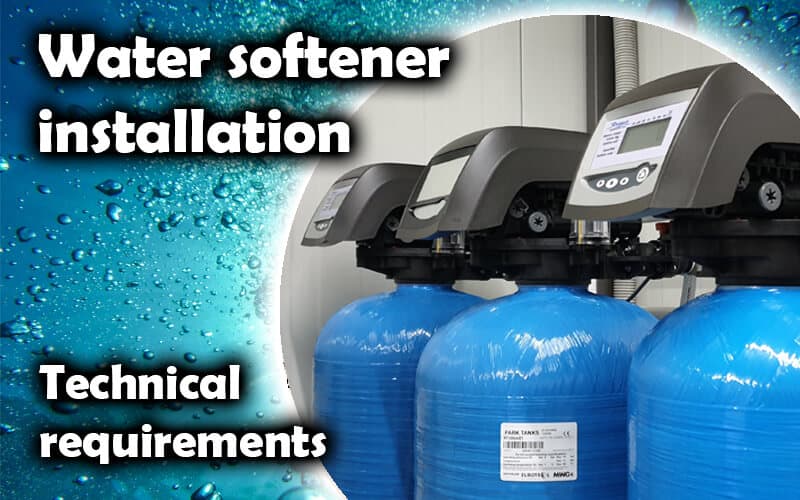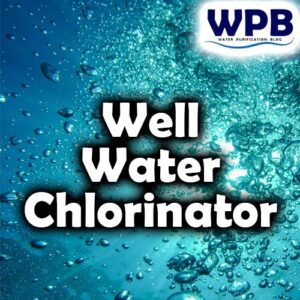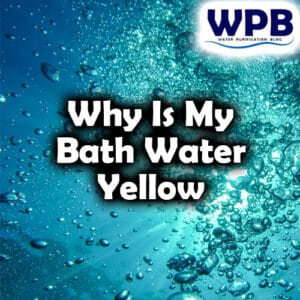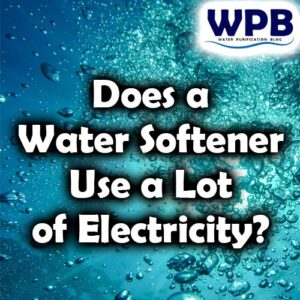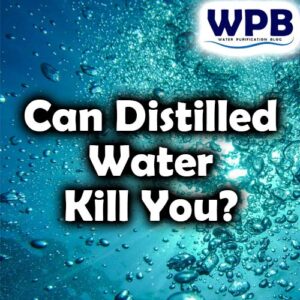Intro
In this blog post you will find detailed guidelines on how to install a water softener, like the water softener electrical requirements, and all other water and drain requirements for an easy installation.
Key takeaways
4 most important requirements for how to install a water softener:
- Water softener inlet water connection
- Water softener outlet water connection
- Water softener drain connection
- Water softener electrical requirements
You can learn more about water softeners and regeneration phases in the HOW DO WATER SOFTENERS WORK blog post.
Table of Contents
Connections for a water softener installation
For the installing a water softener, it is necessary to provide the 4 following connections: cold water softener inlet (hard water) connection, water softener outlet (softened water connection), drain line connection, electrical supply.
It is highly recommended that each water softener or other water purification device is connected the the plumbing over the so-called bypass.
Bypass ensures that, in the event of an intervention or any problem with the water softener, raw water can be directly passed into the installation, without interruption in the water supply.
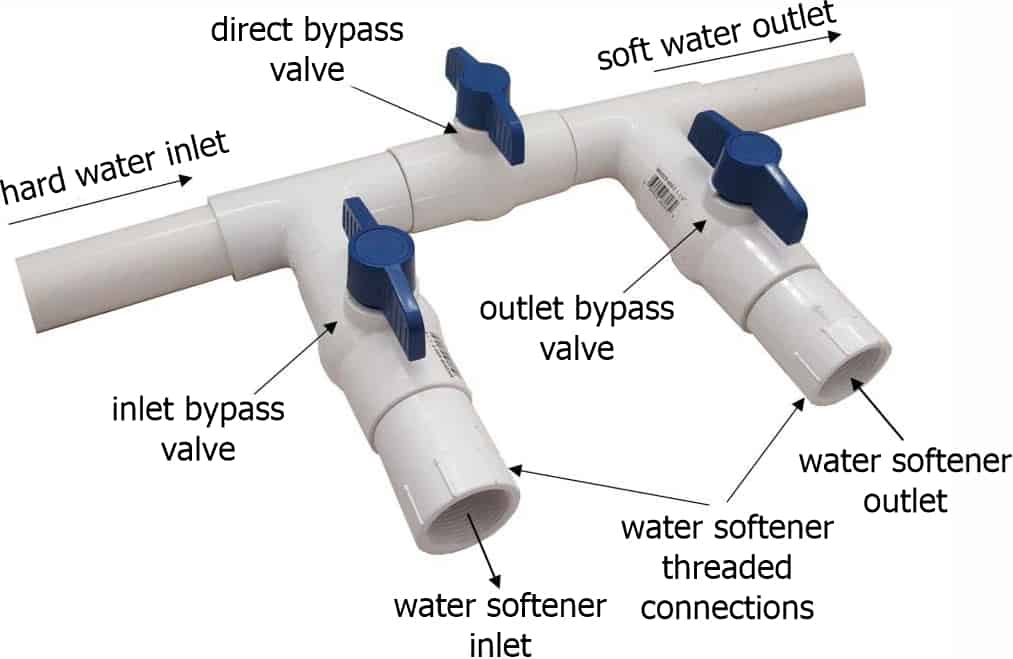
The bypass should be installed in a convenient place on the main pipeline. It provides the necessary connections for the installation of a water softener. Redirecting the water flow is done by ball 3 valves, which are the main parts of a bypass.
Bypass valve on a control valve
Depending on a control valve manufacturer, you can get a bypass valve mounted directly on the water softener control valve.
Below is a picture of an Autotrol 255 bypass valve.
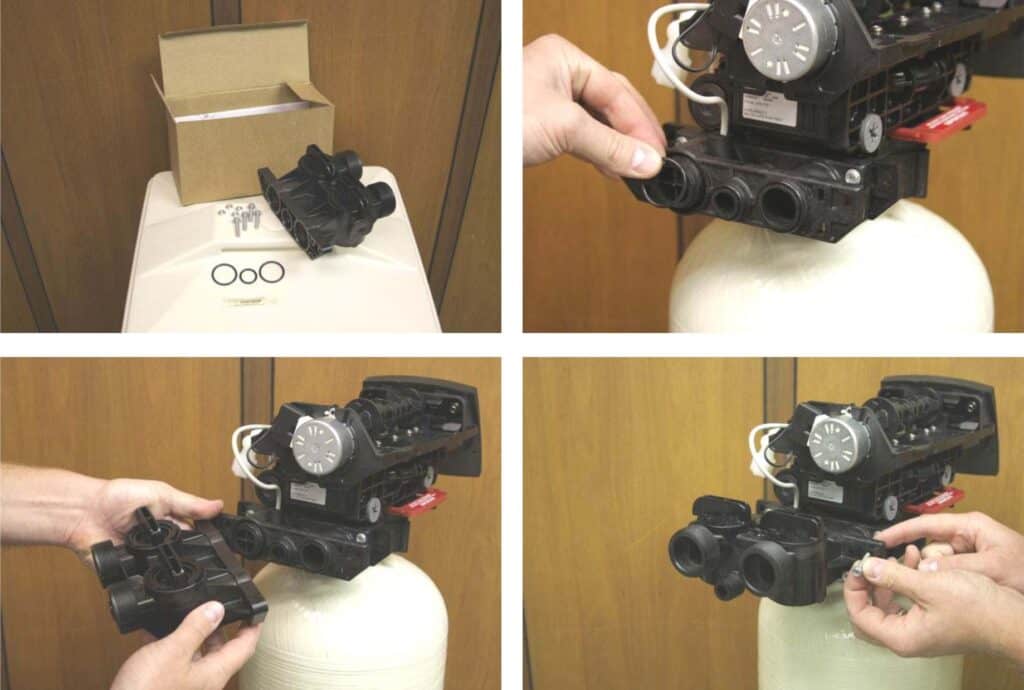
Most important things on installing a water softener
Here are some recommendations on that can help about installing a water softener:
- Install a pre filter to protect the plumbing system and the control valve from mechanical impurities.
- Install a post filter to protect the plumbing system from broken resin beads.
- A water softener should be installed on the main water inlet, so it covers the whole object. Take care not to install it on hot water.
- It should be installed on level platform or floor.
- Enough space should be left to access the equipment for maintenance and salt replenishment.
- Ambient temperature that will not allow the water softener to freeze at any time.
- Permanent power supply to operate the control valve.
- Drain connection as close as possible.
- Water line connection with a bypass is recommended.
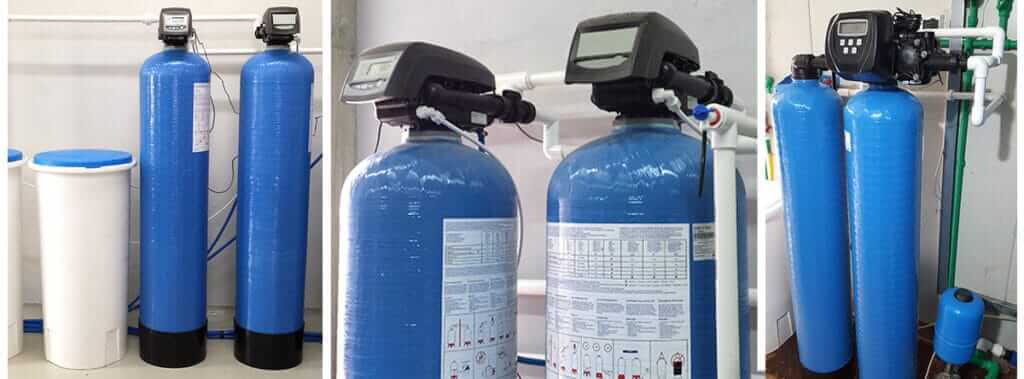
How to install a water softener – Main installation steps
First of all, always read the water softener user manual.
1. Inlet and outlet connections
The inlet connection provides hard water to the softener. The outlet connection provides soft water from the softener.
In domestic applications these connections are usually 3/4″. In case you have different size connection, you should take care when choosing a water softener.
Choose an adequate place for the water softener according to the connections. Leave some space so the bypass valves can be operated.
Watch out to not make any tension on the water softener connections.
2. Drain hose connection
The drain hose connection should be as close as possible. The manual should be checked to make the optimal drain connection, regarding the length.
3. Brine tank connection
Connect the brine tank to the valve. Make the connection and take care to use the fittings accordingly.
Make sure the regenerant line is tight and free of air leaks. Even a small leak can cause a leak in the brine tank connection line and prevent the conditioner from drawing regenerant from the tank. This can cause air to enter the valve and cause problems with valve operation and regeneration.
When the brine tank is connected to the valve, pour salt tablets in the brine tank. You can fill the entire tank with salt.
Only this time you should fill the brine tank with water too. Most common is to fill it with 2/3 of the tank height, when it is filled with salt.
During the first regular regeneration cycle the water softener will adjust the quantity of water in the tank.
4. Water softener electrical requirements
Most commonly, water softener electrical requirements are 12 volt electrical outlet. This is provided by a coresponding electrical adapter that plugs into a standard wall power outlet.
Clack Water Softeners Electrical Requirements
Clack water softeners for domestic use require an 120V / 12 V AC adapter, with 500 mA output. It is supplied with the water softener control valve.
Autotrol Water Softeners Electrical Requirements
Autotrol water softeners for domestic use also require an 120V / 12 V AC transformer, with 500 mA output (older ones were only 150 mA). The transformer is supplied with the water softener control valve.
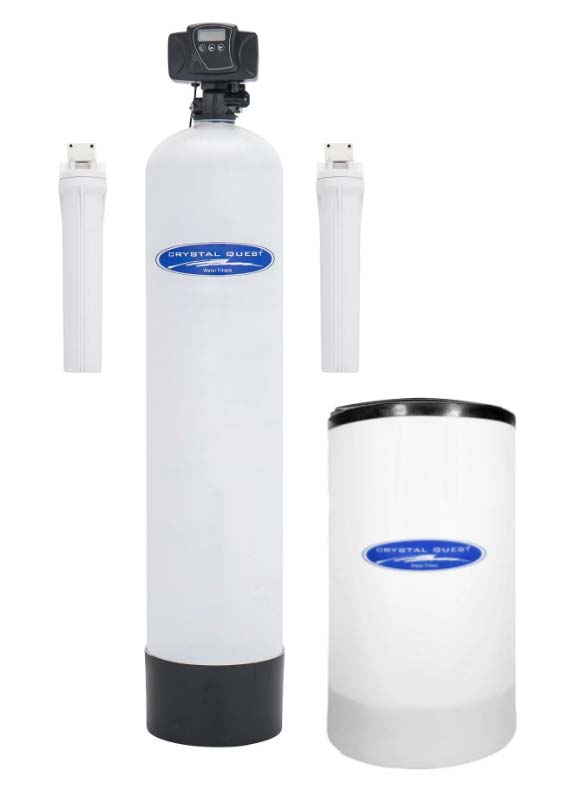
Whole House Water Softener with Pre/Post Filters
Automatic whole house water softener
- 20” sediment cartridge that removes sediment, silt, sand, and dirt
- Ion exchange water softener, 48,000-grain capacity, service flow: 9-11 GPM
- 20” solid carbon cartridge for removing volatile organic carbon compounds (VOCs), insecticides, pesticides and industrial solvents
Crystal Quest has been in the water filtration industry for over 30 years. The company manufactures water filtration and softeners products to a worldwide market for residential, industrial, or commercial use.
The company makes reverse osmosis solutions, water conditioning, water treatment, industrial water filters that can be used in beauty salons, apartments, clubs, government complexes, etc.

Who am I?
I am working as a water treatment technical manager and I have more than 25 years of practical experience in water purification.
Water purification expert
After many years of experience in water purification, I want to share some of my knowledge and get people to know the real importance of water quality.
Water purification and water treatment are very complex themes, so it is important to explain them in an easy-to-read way.
On this blog, you will find many understandable, easy-to-read information about water purification.
I hope you enjoy it, find some useful information, and thank You for reading.
More info on my work and my expertise on water purification can be found on my LinkedIn profile.

